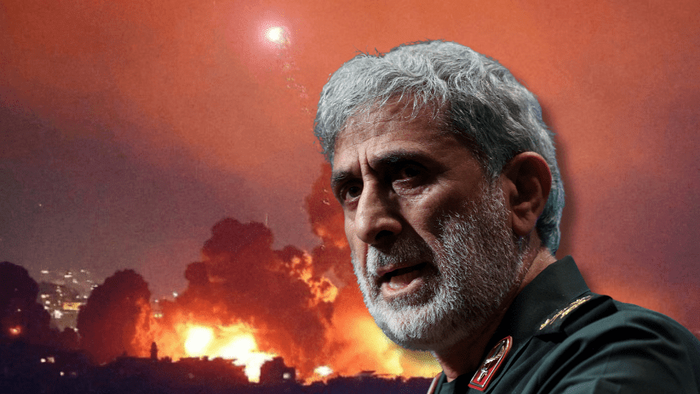Esmail Qaani, the head of the Iranian Revolutionary Guard’s Quds Force, recently made a public appearance at a military funeral in Tehran, attracting significant attention due to his prior absence from public view for approximately two weeks. His disappearance coincided with heightened tensions following an Israeli airstrike on Beirut on September 27, which reportedly targeted and killed prominent figures, including Hezbollah leader Hassan Nasrallah and Iranian General Abbas Nilforoushan. Qaani’s re-emergence, shortly after the recovery of Nilforoushan’s body from rubble, was broadcasted by state media, indicating his continued role in Iran’s military operations despite rampant speculation about his fate during his absence.
The context surrounding Qaani’s absence has created a swirl of rumors and speculation both in regional and international media. Initial reports suggested that he may have been killed or injured in the Israeli airstrike or was under arrest by Iranian authorities for questioning regarding a series of security lapses that enabled Israel’s military operations. Middle East Eye specifically reported that Iranian officials were scrutinizing Qaani for potential security breaches. Such rumors were pervasive, with some outlets claiming his health was declining or he had suffered a heart attack, adding to the mystery of his whereabouts. This ongoing speculation revealed the fragility of information in times of conflict, especially regarding military leadership.
Upon appearing at the funeral for General Nilforoushan, Qaani was seen in full military regalia, dispelling many of the exaggerated claims about his condition. His attendance at the ceremony, which was attended by many officials and military personnel, highlighted the Quds Force’s continued presence in Iranian military and political affairs. The public display of solidarity with Nilforoushan posthumously served not only to honor the fallen general but also to reaffirm the Iranian leadership’s unified stance against external threats, particularly from Israel. This event marked a significant moment for the IRGC as it navigated a complex security landscape in the region.
Despite sporadic calls in the media for a potential decline in Qaani’s influence or health, Iranian sources insisted he remained in robust condition and influential within military circles. Claims surfaced through state-affiliated news outlets that he was expected to receive further honors from Iranian Supreme Leader Ayatollah Ali Khamenei, reinforcing the notion of his continuing importance to the Quds Force and perhaps the broader Iranian military strategy. The Iranian military’s ability to project strength, even in the aftermath of heavy losses, reflects a broader narrative of resilience that the regime seeks to foster among its populace and its allies.
Iran’s strategic position following a ballistic missile attack on Israel on October 1 further compounded this narrative of defiance. Iranian officials, including Foreign Minister Abbas Aragchi, articulated a dual stance of readiness for peace while simultaneously preparing for conflict. Such statements signal Tehran’s intent to maintain a posture of deterrence against perceived aggressions while managing domestic and international perceptions. This balancing act is crucial as the Iranian leadership seeks to reinforce its legitimacy amid growing pressures both from external forces and within its borders.
In summary, Qaani’s reappearance at a significant military event amidst the backdrop of heightened tensions demonstrates the Iranian leadership’s efforts to project confidence and unity in the face of external military threats. The rumors surrounding his absence underscore the vulnerability of military figures in the public eye during periods of conflict, reflecting how incidents can significantly influence narratives around military capability and leadership viability. While Iran continues to advocate for de-escalation, it remains firm in its readiness to respond to any adversarial actions, reinforcing a complex and precarious security environment in the Middle East.

